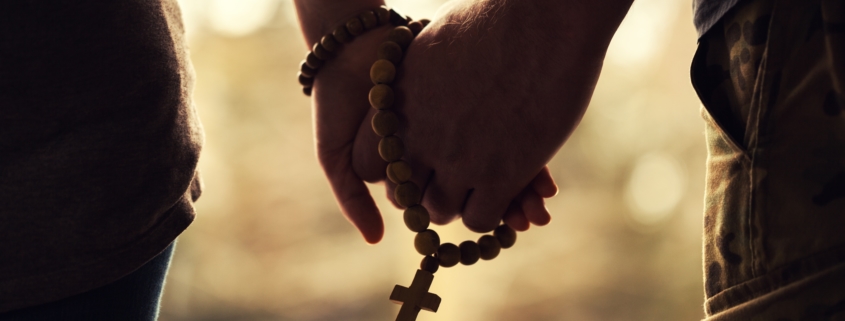Getting it Right: Witness and Teaching on Sexuality in Catholic Education
Editor’s Note: The article below is included in the forthcoming winter 2021 edition of the Newman Society’s Our Catholic Mission magazine.
In 2019, the Vatican’s Congregation for Catholic Education released Male and Female He Created Them, a response to the contemporary “gender ideology” that has sown confusion in American society and even within Catholic education.
The document is important for its forthright acknowledgment of topics—including homosexuality and gender identification—of growing concern to Catholic families, schools and colleges. But despite the Congregation’s expressed hope that the document will be a “practical” resource to Catholic educators, it offers minimal guidance to help navigate the complexities of real situations with students and employees who struggle with sexuality and chastity, especially if they openly dissent from Catholic teaching or act in ways that are scandalous to students.
Increasingly, Catholic dioceses, schools and colleges are embroiled in controversy and conflict over sexual matters. To prevent such problems, these situations require pastoral sensitivity and the guidance of clear institutional policies that both uphold and explain the obligations of faithful Catholic education.
This is one important contribution of The Cardinal Newman Society: helping Catholic educators identify the principles of Catholic teaching and standards of policy and practice to strengthen faithful Catholic identity. Moreover, our work helps protect Catholic education by giving schools and colleges compelling claims to religious freedom, based on clear and consistently implemented policies that are tied directly to their Catholic mission.
Catholic educators cannot get human sexuality wrong. Not only would that be a tragic failure of Catholic education, which strives to form young people in faith, morality and truth, but it also invites lawsuits and increased threats to religious freedom if Catholic educators are perceived to be motivated by bigotry or arbitrary decisions instead of clear and compassionate Catholic teachings.
Consider for example the conflict in Kansas City a couple years ago, when the Archdiocese turned away a kindergarten student parented by a same-sex couple. What principles should guide admission to Catholic education? Does a Catholic school or college accept a child struggling with gender confusion?
How should a Catholic school or college respond when a teacher or professor announces a same-sex marriage or declares a new gender identity? In athletics, should students be able to use locker rooms or compete on teams of the opposite sex?
At the Newman Society, we have heard from well-intentioned educators who refuse to articulate their policies, instead leaving each situation to their own discretion. That approach, while understandable, can often lead to disaster for the school or college. Clear standards of policy and practice, consistent with traditional Catholic moral and theological norms, are key to ensuring fidelity, compassion and justice.
Principles of human sexuality in Catholic education
Our Catholic Identity Standards Project recently published “Policy Standards on Human Sexuality in Catholic Education,” updated from a 2016 paper that was one of our most popular resources for educators.
It looks broadly at Catholic teachings on sex, gender, chastity and marriage, drawing on magisterial teaching to identify key principles for Catholic education and then recommending standards to guide policymaking at Catholic schools and colleges. It also briefly considers the large variety of policies that should be developed to uphold Catholic teaching on sexuality, provides sample policies from several U.S. dioceses, and includes citations from Vatican documents.
Among the principles guiding Catholic education policies is the mission to provide integral formation of students so that the intellect and conscience work together to ensure true bodily health and integrity. Catholic education is so much bigger and so much more important than just teaching students academic subjects. It respects each student as a “complex and multifaceted being, striving for full human flourishing in their physical, moral, spiritual, psychological, social, and intellectual faculties.”
In society today, a disjointed view of the human person can sometimes influence Catholic educators. But as Catholics, we know that our uniquely human biological, social and spiritual elements are connected and should be developed in relation to each other.
In addition, Catholic education is “founded upon a sound Christian anthropology, which describes the human person as ‘a being at once corporeal and spiritual,’ made in the image of God, with complementarity and equality of the sexes as male and female.” Biological sex and gender cannot be separated, but should be “seen in harmony, according to God’s plan.”
Finally, Catholic education should help every student grow in virtue and “faithfully fulfill his role in building the Kingdom of God.” Catholic schools and colleges should be encouraging all community members to strive for chastity, according to their vocation as single, married or religious.
Implementing human sexuality policies
From these principles, the Newman Society recommends several important standards to guide policymaking related to human sexuality. Catholic education should, for instance:
- expect all members of the Catholic educational community to strive for a life of chastity in keeping with their particular state of life, emphasizing the importance of chastity to a life of virtue and growth in one’s relationship with God;
- provide clear institutional supports for living chastely, such as single-sex dorms and rules regarding clothing and behavior to establish standards and minimize temptation;
- ensure that all human sexuality materials and instruction are carefully vetted for complete fidelity to Church teachings, taught by qualified and committed Catholics, modest and pure, targeted to the appropriate age and developmental stage of the student with respect for a child’s latency period (lasting up until puberty), and available in advance to parents who may choose to opt a minor student out of the program;
- ensure that all speakers, vendors, third-party services, and materials are in harmony with the Catholic moral formation of students;
- relate to all members of the school or college community according to their biological sex at birth and maintain appropriate distinctions between males and females, especially in issues of facilities use, athletic teams, uniforms, and nomenclature; and
- prohibit advocacy of moral behavior at odds with Catholic teaching and activities that tend to encourage immoral behavior, especially on issues related to chastity.
These standards can be applied to nearly every aspect of a Catholic school or college. For example, dance policies, consistent with the goal to form virtuous and Christ-centered persons, should require students to refrain from any immodest, impure or sexually suggestive behavior both on and off the dance floor. College residence policies should ensure that students are assigned housing based on their biological sex, are prohibited from engaging in immoral sexual activity, and preserve the privacy of bedrooms from opposite-sex visitors.
It is crucial for a Catholic school to consider every activity of Catholic education and ensure that it upholds Catholic teaching. Students should know God’s beautiful purpose for sexuality and their calling to chastity. Truth is the foundation of Catholic education, and as our updated paper warns, “Educational programs or policies that promote a false understanding of the human person put the whole educational project at risk.”

